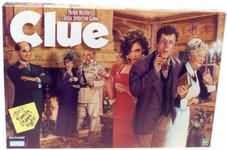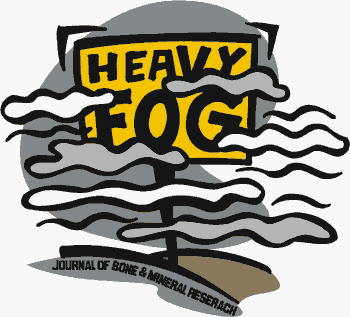
Progress in medicine relies on honest science. The bullying of scientists who have attempted to raise issues of integrity in medicine is a stain on our profession. So is the silence of colleagues.
Whistleblowers swim in shark-infested waters. They quickly learn about the iniquities of a system which protects the wrongdoers instead of patients. There is overt collusion between universities, professional regulatory bodies, drug licensing authorities and medical journals to obscure problems of science and scientific procedure. Often this is done to protect pharmaceutical patrons.
These stories expose the paranoid lengths our profession will go to keep scientific misconduct out of sight. Manipulation of the truth, whitewash, protectionism and lack of accountability are the standard response. We have ended up with pharmaceutical "science" that is in part a house of cards glued in place by vested interests.
The case of
Nancy Olivieri at the University of Toronto continues to raise many worrying issues. The bullying of Olivieri was intense. Amongst the most awful things to happen to Olivieri was publication of a book which concentrated on her supposed personal attributes while ignoring the ethical principles she raised. Unfortunately the author of this book (Miriam Shuchman) failed to declare her conflicts of interest. Shuchman has now been exposed as mis-citing her anonymous sources, several of whom have complained. The University of Toronto have not distanced themselves, nor has it protected Olivieri from these attacks - there has been silence.
Sometimes the small sub-stories are most enlightening. The University of Toronto failed to take proper action against a malicious and very senior colleague who wrote anonymous threatening correspondence to Olivieri and several others. This individual, Professor Gideon Koren, repeadly denied doing so, until entrapped by DNA evidence. He remains an active researcher producing research "findings" which have relevance to patients. It is not clear whether our profession should accept such findings without question. The layer of Teflon coating some senior medical "thought leaders" is very thick.
I have previously written about this book [
Link]. Now Arthur Schafer, a Canadian philosopher has written a scathing indictment of Shuchman's book and of her ethics (Bioethics , Vol. 21 (2) 2007, pp 111-115). The full review is here
here. Extracts are below.
Review of the Drug Trial - by Arthur Schafer - Extracts
Full text
hereThe use of anonymous quotations, and the mis-citing of sourcesThe heavily biased manner in which Shuchman assembles her material seriously undermines The Drug Trial's credibility. Credibility is an especially important issue when evaluating the claims made in this book, because most of the hostile quotations are attributed to doctors and patients who are not identified. One of the few clearly identified patients, "Howard", has now gone on record as saying that his words, as quoted in the book, were twisted beyond recognition. He insists that, so far from being critical of Olivieri's patient care or ethics, he considers Dr. Olivieri to be a highly ethical doctor who is utterly dedicated to her patients.
A brief excerpt from Howard's letter of protest to Shuchman, which has now been made public, raises deep ethical concerns about the integrity of Shuchman's journalism: "Dear Miriam: You've used a smoke-and-mirrors approach to spinning my statements to inaccurately portray Nancy by misquoting me, attributing quotes to me that I didn't make, omitting portions of my comments that would alter the effect and taking these comments out of context."
My confidence in Shuchman's journalistic reliability, already shaken by numerous factual errors and skewed descriptions of key events was further eroded when I came across a passage in which she "quotes" from a commentary I published in The Globe and Mail. I wrote none of the words she attributes to me.
The problem with Gideon KorenMany of Shuchman's other allegations of ethical misconduct, directed against Olivieri, rely on the testimony of Olivieri's leading foe at Sick Kids, Dr. Gideon Koren. Koren, then a senior scientist and scientific administrator at the Hospital, has been found guilty of and severely disciplined for both professional and research misconduct, first by the hospital and the university, and later by the Ontario medical licensing body. The hospital and the university found that his actions, including persistent "lying" in connection with his efforts to discredit Dr. Olivieri, "constitute gross misconduct and provide sufficient grounds for dismissal."
The CAUT Report found that Dr. Koren "attempted to discredit Dr. Olivieri by dishonest means". In the words of the Discipline Committee of the College of Physicians and Surgeons of Ontario, Dr. Koren was guilty of "conduct unbecoming a physician". "His actions were childish, vindictive and dishonest", authoring "vicious diatribes" contained in anonymous "poison pen letters" against Dr. Olivieri. Koren was stripped by the University of his Endowed Chair, required to arrange that his ethically suspect research be deleted from the scientific record, publicly reprimanded by the licensing body, and required to pay substantial fines by the hospital, the university and the licensing body.
Shuchman has great admiration for Koren and devotes almost a full chapter of her book to trivializing his misconduct and praising his stellar virtues and research accomplishments. Unfortunately, she omits to inform her readers of the full extent of Dr. Koren's publicly reported misconduct.
Institutional obfuscationOlivieri's hospital, The Hospital for Sick Children, and her university, the University of Toronto, have also taken a public drubbing for failing to provide her with effective support as she struggled with Apotex. Actually, not only was Olivieri denied effective support, she was fired from her position as the director of the Hospital's hemoglobinopathy programme, and both she and those colleagues brave enough to support her experienced harassment of many kinds. In the words of the CAUT Report: "Neither HSC nor the University …took effective action to defend principles of research ethics, clinical ethics and academic freedom." When it was discovered that the university was negotiating with Apotex for a huge financial donation, well, some people drew their own conclusions, and these were not flattering to the university
The veritable cornucopia of discredit which Shuchman heaps on Nancy Olivieri is, I'm sorry to say, standard punishment for those who have the temerity to challenge powerful vested interests. In the popular imagination David bravely slays Goliath. Alas, in the real world, the whistle-blower's issue of principle is easily re-described as an act of private disloyalty and, worse, as evidence of professional incompetence and psychological disturbance.
For every Erin Brockovitch, rewarded with fame and fortune (when Julia Roberts was cast by Hollywood to portray her brave struggle), there are a dozen other whistle-blowers consigned by employers and colleagues to professional oblivion. Typically, those who challenge authority find that their professional competence, personal lifestyle and mental stability are all brought into question. Most whistle-blowers are also labeled malcontents and publicity seekers, as Shuchman stigmatizes Olivieri. They are duly punished with demotion, suspension, and/or dismissal. The case of Dr. Aubrey Blumsohn, recently suspended from his job by Sheffield University after he blew the whistle on one of that University's major research funders, Proctor and Gamble, fits the same pattern. Few whistleblowers escape this fate.
Demonstrably false chargesTo fill out her story, Shuchman compiles a lengthy charge sheet against Olivieri. The most serious accusation is that Olivieri negligently delayed the implementation (at Sick Kids Hospital) of proper guidelines for the treatment of sickle cell patients. Shuchman claims that this delay led directly to the death of a young patient, Sanchia Bulgin. Shuchman is unmoved by the fact that Olivieri was not one of the physicians treating this patient, and that the responsible physicians were found (by two official inquiries) to have violated established guidelines which had been in place for years. It's a bizarre accusation.
Reading The Drug Trial I was repeatedly struck by how often Shuchman's account of events is contradicted by the findings of a series of independent inquiries - all public documents, all easily obtainable. Almost all of the anti-Olivieri "revelations" presented in Shuchman's book are warmed-over versions of allegations already disproven by one or more of these impartial inquiries, and the others are undocumented hearsay. In short, Shuchman's way with well-established facts would have brought a smile to the face of Procrustes.
Related LinksGideon Koren - misconduct [
Link]
Earlier|Later|
Main Page
 I have been tagged for a Thinking Blogger Award by two of the greatest anonymous medical bloggers over the past week - Pharmagossip award and Clinical Psychology and Psychiatry - award. These are two great pharmaceutical blogs. When one is nominated, it is apparently one’s duty to pass along five sites (and only five sites) that make one think.
I have been tagged for a Thinking Blogger Award by two of the greatest anonymous medical bloggers over the past week - Pharmagossip award and Clinical Psychology and Psychiatry - award. These are two great pharmaceutical blogs. When one is nominated, it is apparently one’s duty to pass along five sites (and only five sites) that make one think.  Several other blog entries discussed the Waddington game Clue (Cluedo for those in the UK).
Several other blog entries discussed the Waddington game Clue (Cluedo for those in the UK). Patients get damaged by misrepresented pharmaceutical research. “Ghost-writing” has been repeatedly criticized - but this diverts attention from the more important problem – “
Patients get damaged by misrepresented pharmaceutical research. “Ghost-writing” has been repeatedly criticized - but this diverts attention from the more important problem – “ I
I  Progress in medicine relies on honest science. The bullying of scientists who have attempted to raise issues of integrity in medicine is a stain on our profession. So is the silence of colleagues.
Progress in medicine relies on honest science. The bullying of scientists who have attempted to raise issues of integrity in medicine is a stain on our profession. So is the silence of colleagues.